Karen Refugees Stuck In The Middle/Champasak, Vat Phou South Laos Part One/Mini-Tower i7-950 Workstation


Quick Click Links
Feature Photograph Champasak, Vat Phou South Laos, Part One Mini-Tower i7-950 Workstation Build
Photography News of Interest
Readers Submissions Readers Questions A Snapshot of Bangkok Images Week in Review
I
nfocus Blog, THIS is ThailandT
Feature Photograph *menu

Canon 1ds Mark II, 70-200mm F2.8L IS @F8 1/100th 200mm ISO 200
Images have value and hold interest for various reasons, and it’s often been said (with me saying it) that most of the value of an image comes from making the effort to be there and pointing the camera in the right direction. Yet, it doesn’t take ‘that’ much more effort to achieve a properly focused well exposed image. Really it doesn’t.
This image is significant because it’s a great example of being there. Yet, by itself you don’t know where “there” is and why you should think this image has any special significance at all. Do you have an reason to think I’m not standing ten feet away from them when I made this capture? It’s certainly well focused and properly exposed. The perspective shows me perhaps a bit higher than the subjects?
So why is this image worth mention? Let’s look at a less interesting ‘companion image’ that supports the main image. Words can support an image and help you visualize the missing elements as well. We’re doing both.

Canon 1ds Mark II, 70-200mm F2.8L IS @F8 1/200th 73mm ISO 200
My feet haven’t moved, the camera was held to my eye and didn’t move for both captures. The only thing that moved was my focus ring and my shutter speed for exposure. Can you see why ensuring your images are well focused pays dividends? Later when comparing your notes to the images you might come up with something interesting.
This is the Friendship bridge from Mae Sot to Burma. This is a family of refugees actually living under the bridge, in the middle of a river bed, permanently. They can’t go back to Burma (Myanmar) lest they be prosecuted, but they’re not really in Thailand either.
Why don’t they simply come into Thailand? And how do I know these things? Well, other than direct observation over a few weeks' time, I confirmed my suspicions by chatting with this guy.

Canon 1ds Mark II, 70-200mm F2.8L IS USM @F8 1/125th 200mm ISO 200
Thai soldiers, in groups of 4 regular soldiers to 1 special forces trained soldier, patrol this area to deter refugees from flooding over the border like they often do further north, when they flee across the river during active military action in their country. The Myanmar soldiers are killing them, so they flee across the border into the Thailand based refugee camps. This particular area being a popular tourist area is relatively safe for them, since it’s internationally visible. Still, like last week this border crossing does get closed down amidst military action from the Myanmar soldiers.
You can’t tell from the first image, and possibly not from the two companion images, but fill in the blanks with a few words and the story becomes larger than life. An entire family, living on a river bed under a bridge, who can’t go back to their country, and the soldiers keeping them out of Thailand are just as responsible for keeping them safe from Myanmar soldiers are they are from keeping them out of Thailand.
I’ll be the first to tell you there are some heartless corrupt soldiers along this border. But ‘most’ of the Thai soldiers in this area feel real empathy and care very much for the Karens who are being prosecuted. As they told me, they can’t help but care because they see and experience their plight every day and night. This soldier said he could never fall asleep on duty, it’s his fear the Myanmar soldiers will hurt / kill this family if he doesn’t watch them 24/7. He told me it would never happen on his watch. The special forces trained sniper sitting next to him just smiled and told me not on his either. I believe them.
Champasak, Vat Phou South Laos Part 1 *menu
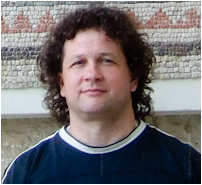
Eyal hails from Israel where he works hard half the year, saving to spend the other half of the year using Thailand as a base to travel throughout South East Asia. Eyal has had a strong interest in submission writing and photography and has corresponded
with me for years, asking questions, taking notes, and working up to this submission. Writing in a second language is never easy, and often it's very difficult. For some of us impossible. To keep such good records and document the trip so
well, and then to put the work in to share with the readers is very much appreciated. I hope to see more of his work grace future columns. You can contact Eyal via email at lotfaifa@yahoo.com
This is an area which is just 30 kilometers away from the city Pakse in southern Laos. Today, access to this area is done by boats or a ferry which are able to move a vehicle between the two banks of the Mekong River. In the near future there will be a significant change since the new road being built in the area includes a bridge over the river.
Champasak is a fairly large rural area with mainly rice crops.
This unique place is related to the distant past. Temples of the large arch extends over a sizeable area. The temple known as Vat Phou. This is the only Khmer temple in Laos. The Temple covers a large area at the foot of a high mountain and is built in a gradual manner. The location of the temple was chosen carefully with the characteristic stone temples that appear in Cambodia.
There is an architectural plan for the temple compound. Ingenious engineering design achieved several goals at the same time. In the first stage using locally quarried stone mountain area spared costly transport suitable stone from far away. Every building of local stone in the temple site. In the second phase while Huge rock surfaces have been removed. In this way all changed and adapted the original surface and incorporated into the architectural program. Shows the view from all levels top fruit arranged in-depth planning.
Like elsewhere in the universe this temple indicates the limits of the spread of the mighty Khmer Empire. Surprisingly, the view from the top of the temple mentions other areas in Cambodia. Entering the site you’ll find a museum containing artifacts found at the site. The Museum was built by the Government of Japan. In Laos the Government of Japan is involved in many projects such as building schools and paving roads and more.
These days there is an important project in Vat Phou archeological site. Due to ground movement over the years are two huge buildings in danger of collapse on the lower level. The walls tend to lean on their side and need to dismantle parts of the structure and build the walls again. This is a joint project of the Government of India Government of Laos that combines conservation and restoration and rescue of the Vat Phou temple. In parallel more projects are involved in conservation and restoration teams from Italy and France. These projects are very expensive and require professionals and a significant length of time. Visiting Vat Phou was fascinating and shows some of the glory days of the Khmer Empire.



Cross the Mekong river to Champasak. Today you must use the service of the small boats or the ferry. In the near future there is going to be a bridge over the Mekong.

At the entrance to the museum there is this sign indicate the contribution of the Japanese Government for Vat Phou archeological site.


Entering the temple complex. There is a paved entrance to the temple area.

The same entrance captured from a different level in the temple.

This picture says it all. The biggest project in the site is supported by the Government of the Republic of India. Vat Phou northern quadrangle is one of two big building you see when you enter the temple complex.


Conservation and restoration are in one of this big building. Since this kind of work takes a lot of effort usually the effort is put in one place at the time.

The second big building in the northern quadrangle. Conservation works didn't start yet on this complex.


Due to ground movement over the years are two huge buildings in danger of collapse. The walls tend on their side and need to dismantle parts of the structure and build the walls again. Each line of stones is taken out, marked, and restored until the structure is rebuilt again.


The second building in the northern quadrangle. The entrance just collapsed.



Since it’s a lot of heavy stones there is a real need to use heavy duty machine to remove and rebuild those very heavy stones of the temple complex.

Restoration of the first building entrance.

Handmade. Restoration of architecture element. It’s a lot of work. This work takes a lot of time.


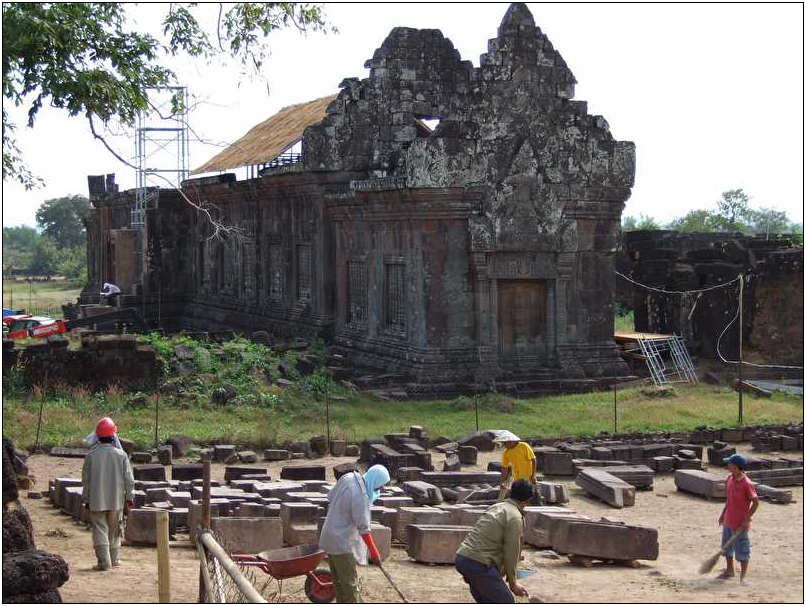
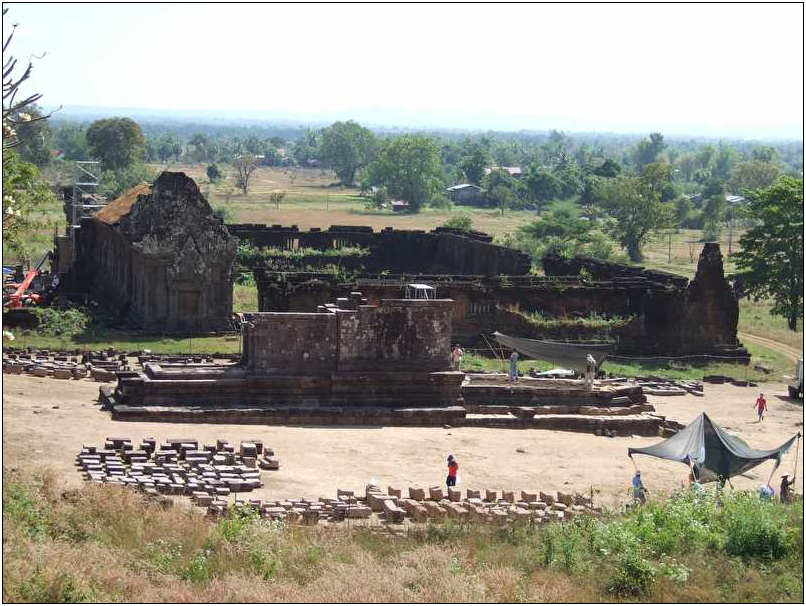
Another project in the same site. It’s an Lao-Italian project.

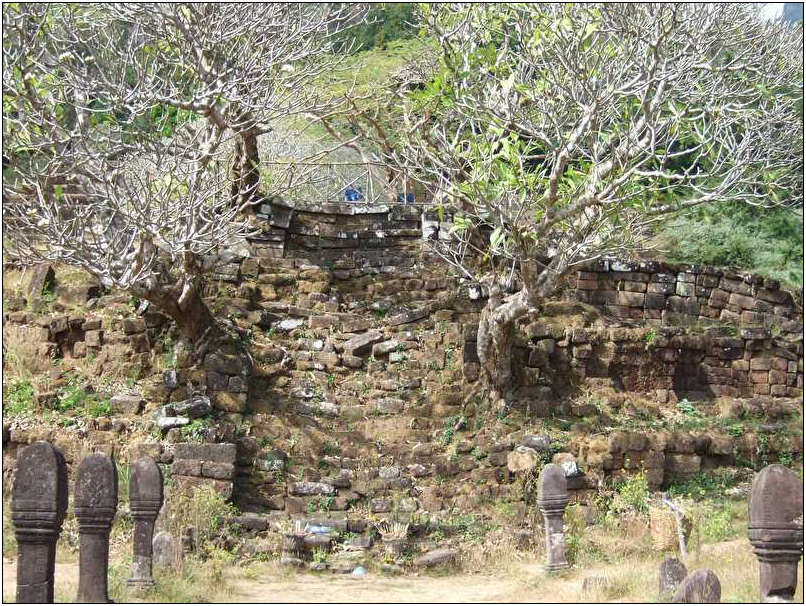
Going up to the second level.
Next week we’ll run the second part of this interesting feature!
Mini-Tower i7-950 Workstation Build *menu

Introduction
Let's face it. We're now in the "Ipad Era" as far as the size of our computing devices go. Desktops which used to be a common household appliance have long since been supplanted by the ubiquitous laptop/notebook. We've had this ever increasing desire to make our computers smaller and to blend in or disappear into our home and office decor, rather than to take center stage. I often hear my clients say "I'd love to have a powerful image processing station, but my wife wouldn't allow it in our office/den/study.." Or "I can barely get away with the big screen plasma.." Perhaps the days of impressive looking electronic devices dominating our homes has long passed.
To this end I spent the several weeks researching, measuring, and designing a very size and weight efficient no compromises imaging workstation. A tough lightweight computer not much bigger than a breadbox. And by no compromises I mean it will be equipped with the most powerful graphics processing unit (GPU) useful for imaging, and will even hold the biggest/longest video card desired by the most serious gamers. It will even hold two of them.
It will hold up to the most powerful 6 core Intel i7 CPU available with the more desirable 1366 socket, and with as much RAM as you desire. No special power supply required, it will house a common ATX sized power supply. It will be equipped with the fasted Solid State Disk (SSD) available anywhere with file transfer speeds exceeding 700mbps for both read and write operations which fits in a PCIe slot and not a slower SATA II or III interface. A 32-1 flash memory card reader, Blue-Ray optical drive, and eight available 3.5" drive bays for a total of 24 TERABYTES of storage. It will even be able to pull double duty as a Home Theater PC (HTPC) with 7.1 channel optical and coaxial outputs, DTS, Dolby and THX certified. This is not your Father's PC!
All of this in a breadbox sized box with great style, totally silent operation, and available in three colors. Red, Black, or Silver. Read on to see which components I selected to build this system and why I chose each one.
The Components
Quality parts are essential for a reliable workstation, but when you’re building a powerful workstation in a very small footprint case, the size and performance of each component must be carefully considered. Space is at a premium, so to ensure proper fit, adequate cooling, and optimum performance you’ll either do some serious research or pay a system builder to make your system. I don’t build systems full time, but I have built many systems for my clients who would rather someone knowledgeable with imaging and computers put their system together. If you have a need, ask.
Case
This was perhaps the most critical part of the component selection. A case determines the size of the motherboard, how many storage drives it can hold, the size of the power supply, front panel switches and ports, cooling, and acoustical efficiency. More, because this time my goal was the smallest possible case with the most powerful components, and I wanted it to be strong enough for regular portability, case selection was even more critical.

I researched and went hands-on with many cases, and was pleased to see Lian-li topped my list. Lian-li has long been my favorite case manufacturer because of their high quality all aluminum construction, great design, light weight, and reasonable prices. In the industry Lian-li is known as the Rolls Royce of PC cases.
The Lian-li PC-V354 Micro-ATX case reviewed here was without a doubt the best case for the build. Nothing else was close. It was such a necessary part of the build that I ordered it from the states and paid the high shipping cost. My sources at Pantip tell me this case will be available here in Thailand sometime in March.
Motherboard

When choosing a motherboard there are many technical considerations. Do you want a 1156 socket motherboard for the entry level i3/i5/i7 Intel CPU’s, an AMD CPU motherboard to save money, maybe the new 1155 socket Sandy Bridge, or the no-holds barred 1366 socket motherboard?
I won’t go into many of the technical details, but I wanted the most powerful motherboard possible with as much ‘future proofing’ as possible. More, I knew I’d be using it with high-speed SSD’s, GPU’s, and USB 3.0 devices and I needed the most PCIe channels to help prevent bottlenecks. I’ll admit, the new Sandy Bridge CPU’s were very tempting, but ultimately the 1366 CPU socket with the x58 chipset, six slots for DDR3 triple channel memory, and is the platform/socket of choice for the upcoming Intel i9 CPU.
The problem with my choice is it severely limited my choices. While there are roughly 90 1156 socket motherboards and already over 30 new 1155 socket Sandy Bridge motherboards in the Micro-ATX size which would fit my case, there were only 3 available with the 1366 socket. Further investigation revealed only one of these had both USB 3.0 and the SATA III/6gbps interfaces required for my level of build. One motherboard. Not much to choose from.
Asus’s Rampage III Gene Micro-ATX motherboard reviewed here was the only choice, and the best choice. This board is built a very high quality level to support major over clocking and other severe use demanded by hard-core gamers. Every feature which supports gamers, made this a better more high quality board to use for imaging. All the right ports and features were present. Read the linked review for more information.
Again, it wasn’t available yet in Thailand so I ordered it from the states. I’m told it will be available here in Thailand next month.
CPU

The motherboard, RAM, and CPU choices MUST be made together. The 1366 CPU’s available include the ever popular i7-950 four core 3.06ghz chip, up through the Extreme Series i7-980x six core 3.3ghz chip. There are several in between. I chose the i7-950.

Why the i7-950? Aren’t more cores and more power better? Absolutely. But cost is always a factor and so is the point of marginal returns. A i7-950 4 core 3.06ghz chip here in Thailand runs under baht 10,000. The Extreme Series i7-980x 6 core 3.3ghz chip runs baht 35,000. Over three times the price!
In actual real use both of these chips can be over clocked to very near the same speeds. 3.8ghz is easily done on air cooling with 100% reliability. That really only leaves the matter of the two additional cores. I regular monitor my core usage with a special widget which shows my usage, and logs it as well. 4 cores means 8 threads with hyper threading. Not all programs are designed to use multiple cores, though today most of your major imaging programs such as Lightroom, Adobe CS5 Photoshop, and Phase One’s C1Pro6 are utilize multiple cores. But a review of my logs showed me that over 90% of the time I never used the 8 threads I already had.
So, for more than three times the price I passed on the Extreme Series i7-980x. You might find it worth it. Not only that, I was thinking that before summer is over the new i9 CPU’s with even more cores and much lower anticipated prices will arrive and then I can simply swap out my old i7-950 with a new i9, without changing anything else on my system. If I feel the value is there.
CPU Cooler

CPU coolers serve two major functions over the stock Intel fan cooler that comes with the CPU. They drastically reduce or eliminate fan whine/noise, and they can cool the CPU much more efficiently. Cooling is especially important if you plan to over clock.
As you walk through Pantip you’ll see literally hundreds of CPU coolers of all shapes and sizes gracing the windows of most every enthusiast shop. Which one is for you? First, they need to include a mounting bracket which supports your CPU and all the necessary hardware such as screws and springs and even a high quality thermal compound. That still leaves a lot, so I keep track of several excellent websites that regular test and review coolers. No need in duplicating someone else’s work. Consistently the Thermalright 120 Extreme has either totally out performed every other cooler for the last 3 years, or been in the top three. It’s a solid choice I used onmy i7-920 build some time back and have since installed in over 20 custom builds for clients. It just plain works.

However, we now have new requirements. The small footprint Micro-ATX build. This is a huge tower cooler and it wasn’t clear if it was going to fit in the case and clear all the other components such as the RAM memory cards and the video card. Not being sure, even after careful measuring, I bought it anyway. Later, during the build, I discovered the cooler would fit, but I’d need to suspend the fan ‘near’ the cooler vs. ‘on’ the cooler as it was designed. This presented very little trouble and doesn’t seem to have affected the cooling at all. I’m happy with this choice.
MEMORY/RAM

I used OCZ’s excellent DDR3 PC3-16000 triple channel memory. Two sets of 3 2tb modules each, for a total of 12gb. 12gb is plenty for imaging. 24gb is the max this system can hold and would be better for rendering video.
RAM is one of the areas in a system where you stand to achieve the most performance gain when going from the standard fare, to the most extreme. And due to our Micro-ATX footprint and large tower CPU cooler space was at a premium thereby eliminating any RAM modules with high profile heatsinks.

Some will say ‘why waste the money on 16000+ memory, when it all runs at 1033 anyway?” This is true on entry level motherboards. On enthusiast motherboards, and with quality RAM embedded with settings profiles, you can take advantage of the higher speed memory through a simple BIOS settings (XMP Profile 1). Now it becomes a simple cost factor, is the additional 4-5% performance improvement going to justify the extra cost. In this case I got a great deal on the 16000+ memory which made it worth it.
Power Supply

The highest quality power supply, with the most power, you can possibly afford is the single most important thing you can do for system stability and longevity. This is not an area to skimp.
With this in mind, we still had the size and case restrictions imposed by the Micro-ATX footprint and the Lian-li PC-V354 case. The case accepts full ATX size power supplies which is unusual in a Micro-ATX case which is great, yet I noticed the way it was mounted didn’t provide for an air intake vent like the new style with the big more quiet fan on top. This means for best cooling I needed a rear intake power supply. And I wanted it as quiet, powerful, and the highest possible quality.
PCpowerandCooling has built their reputation providing high quality power supplies to specialty builders, server builders, and those demanding the best possible power supplies. Their newest consumer grade supply is the Silencer 900 which was perfect for my needs. Besides, I already had one in my storage room brand new.
System Drive

Your system drive holds your operating system and desirably most if not all of your programs. The faster this drive is, the faster your boot times will be, and the faster your programs will load.
Solid State Devices (SSD’s) are hugely faster than the mechanical drives most are still using. Without going into numbers allow me an example. A benchmark test I run on the SSD I selected for this build processes a set amount of data and executes a set amount of instructions in roughly 12 seconds. The same benchmark on a mechanical hard drive can take several hours. Twice that on a laptop drive. I’ve run the tests and seen it first hand. An SSD will improve the performance of almost any level system more than any other single component or action you can change.
With my very positive experience with my Crucial C300 256gb SSD I reviewed here I was faced with the decision to buy another of these excellent SSD’s which are still among the top three available, or try a new PCIe SSD card. For the same money, the PCIe card offered the same capacity and greatly improved performance.

I chose OCZ’s Revodrive. This is a PCIe x4 card with Sandforce controllers and it’s significantly faster than any SATA II or III SSD available. Simply put, this drive screams. Read more about it in my review here.
Storage/Data Drives

Conventional wisdom dictates Western Digital Black 1-2tb SATA II 3.5 inch drives for storage purposes. Virtually every imaging professional I know uses them for external storage. They use Drobo’s for external storage.
However, my requirements called for the ‘fastest and lightest’ possible. This build is to be used for my students use during workshops and portable on-site use for big jobs. I didn’t need the 24tb of storage available on my main workstation, and which would fit in the Lian-li PC-V354 case. I also didn’t want the additional weight of 3.5 inch drives, the additional noise, or the additional heat. I simply needed the fastest and lightest 1tb worth of storage available at a reasonable cost.
A 1tb SSD would fit the bill, but would end up costing more than the rest of the system combined. Then I remembered I had the 500gb Seagate Momentus XT Hybrid drives in my storeroom from a previous review. I had two of the small 2.5 inch hybrid drives available.
The Lian-li case had special mounting points for up to (4) 2.5inch drives. I mounted the hybrids into the case and connected them to the system not really knowing how they’d perform for my needs.

When you ‘pull’ an image file from your storage drive into memory to work on it in an imaging program, this often creates a time lag of a few seconds, a type of bottleneck. A WD Black can transfer at roughly 90mbps, and a top laptop drive at about 55mbps. The Revodrive above can do this at over 500mbps. And that’s only part of the story, sequential speeds aren’t everything. It’s the 4k reads and writes which tell the rest of the story, making a SSD possibly nearly a hundred times faster to pull up a file over a mechanical drive.
I was surprised to see I could pull up files from the hybrid drives at up to 250mbps! And I could do this for the first 2-3gb of data I needed which is enough for over 95% of my accesses. After the first 2-3gb the speeds would drop to the 50-55mbps you’d expect from a high-end laptop drive. Since these hybrid drives are only baht 3000 each at Pantip I consider this a great value. I’m going to install one of these Seagate Momentus XT drives in my main workstation to hold the files I’m currently processing, and then move them over to the WD Black 3.5 inch SATA II drives for archival purposes.
Video Card

Another vital choice in a system build is the video card. It should be carefully matched to your desired tasks. I’m not a gamer, but I do require significant GPU (graphic processor unit) power for my imaging. Conventional wisdom ‘used’ to say that for Photoshop and imaging any video card was good, that you’d see no performance gains from a faster card. That was before Adobe CS4 and CS5 came out, now taking advantage of OpenGL and the power of your video card.
Still, there is only so much power you need for imaging. For this build I selected the ATI Radeon 5770 GPU I reviewed here. It’s low price, modest power draw, and high performance makes it an excellent choice for imaging professionals. Even those who play the occasional game or two.

If I was rendering significant video footage with this machine I’d have went with the more powerful dual GPU ATI Radeon 5970 like I have in my main workstation, or perhaps the newer ATI Radeon 6970. There are websites totally dedicated to helping you select the right ‘fit’ of video card for your system. Knowing your needs and then not exceeding them helps you get all the GPU power you need, and not spend money you don’t need to spend.
Monitor

I always advise clients to purchase the largest and highest quality monitor you can afford. Nothing will give you more pleasure and satisfaction than seeing your images displayed in all their glory on a quality LCD. To this end I have dual NEC LCD2690uxi2’s (26.5 inch professional imaging monitors) for my main workstation. But what about an amateur photographer, or someone like me looking for a highly portable large monitor still suitable for teaching imaging to clients?
This is where I still feel theSamsung BX2450 I reviewed here continues to shine. It’s very thin, very light, and only about 9000 baht at Pantip Plaza with a full three year warranty.

Keep in mind, this is a LED LCD of the 1920×1080 consumer variety. It’s not the best, it’s only adequate for imaging. And only after proper setup and calibration. I encourage you to read the full review for this information.
Keyboard

Quality keyboards enhance productivity. I personally feel the Logitech K800 Wireless Illuminated Keyboard reviewed here is the best choice, but if you want a wired keyboard or like me have one sitting in your storage room, the Logitech Illuminated Wired Keyboard reviewed here is an excellent choice.

The Perfect Stroke key system, the 5 levels of illumination, the smart keys, they all add up to an excellent value. Everyone who’s used this keyboard makes unsolicited positive comments.
Mouse

Another important choice. I can’t count the number of really expensive systems I’ve seen where the owner skimped with a 200 baht mouse. The horrors. It’s like the difference of riding in a Benz vs. a tuk-tuk. Please don’t skimp on the mouse as tempting at is might be. Buy a good one and you’ll immediately recognize the value.
I’ve reviewed several mice over the last year, and you guessed it, I had a Logitech MX1100 in my storage room already so this is what I’m using with this system. I reviewed it in depth here.

I’ve also reviewed the Logitech Performance MX Mouse here. You’re probably wondering which one I like better? I like the Performance mouse better, but only because it’s slightly smaller and fits my smaller hands better. It’s also a great deal lighter in weight than the MX1100 and you can feel it. Some people like a bigger more substantial mouse, some like a smaller lighter one. It’s purely a matter of taste in this instance. Most would be happy with either as they’re both very high quality with excellent drivers and supporting software.
The Build
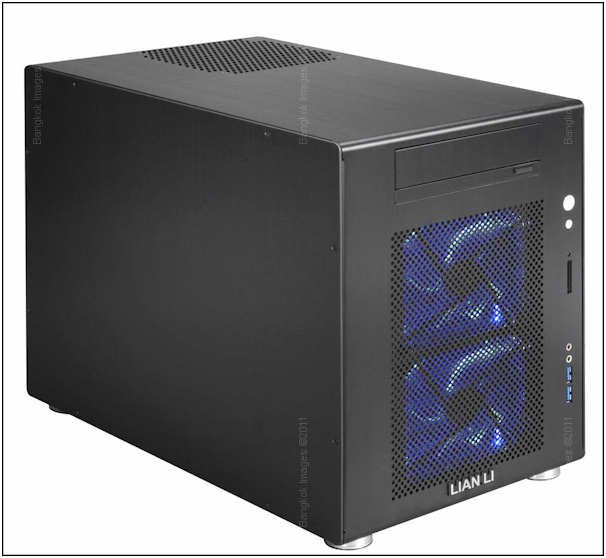
Using the exact parts described above I sat down to carefully build the system. Building a small footprint Micro-ATX case is a different experience than a full size tower case. Everything must be precise and perfectly installed and wires thoughtfully routed.
Because airflow is at a premium in such a small case, any cable or component not thoughtfully placed could result in significantly increased temperatures and/or unwanted vibrations or noise.
More, the sequence of the build is vital. I stripped out the case and installed the optical drive, assembled the motherboard/cpu/ram/cooler and attached it to the case side after connecting as many of the front panel wires and connectors as possible.
I then installed the video card, wi-fi card, and Revodrive PCIe SSD. With these in place I attached the Seagate Momentus XT Hybrid drives into the drive bays and replaced them in the case.
Finally, I installed the power supply and connected the power connectors to the motherboard (2), video card, optical drive, and hybrid drives (2). Finally, I suspected the CPU Cooler 120mm fan in an ideal location. When finished I attached the last side panel and secured all the screws.
IF you seated every board perfectly, attached each wire in the right place, and didn’t forget anything.. then you’re ready to connect the monitor, keyboard, and mouse, and boot up into the BIOS settings and set your system accordingly. Once this is done, you can put your Windows 7 x64 into the optical drive and install your operating system.
Performance
There is always the big moment with a new build when you apply the power for the first time and see if everything turns on and works properly. The lack of smoke and loud noises is a good sign.
From the moment I turned on this system I was amazed at its acoustic performance. There is hardly any noise at all, and the noise you ‘can’ hear comes from the small fan in the power supply and on the video card. The case fans are silent as are the hybrid drives.
Normally, I’d use an optional cooler on the video card with a larger totally silent fan. I didn’t have the luxury of this option this time because there simply wasn’t enough room between the cards to allow the larger size of the fans. Remember, this motherboard is only 9.6 inches square. It really crams a lot into a small package. If there was a side air intake on the case I would have used a power supply with the larger bottom/top mounted fan which would have reduced noise further. But overall, this is a very quiet system. From 2-3 feet away you can’t hear a thing.
The speed is stunning. Without over clocking, you snap from task to task in an eyeblink. With the combination of the Revodrive PCIe SSD and Seagate Hybrids, there is very little if any noticeable bottleneck when performing most common imaging tasks. Those who have used this system can’t believe the amount of power in such a small shoebox sized machine.
Normally I’d expect temperatures to be an issue with this much power and such a small case, but even with ambient temps sitting at 35c, the CPU idled at 39-41c and under full load barely reached 50-52c. The video card was slightly warmer under load at 55c.
You couldn’t hope for better performance.
Summary
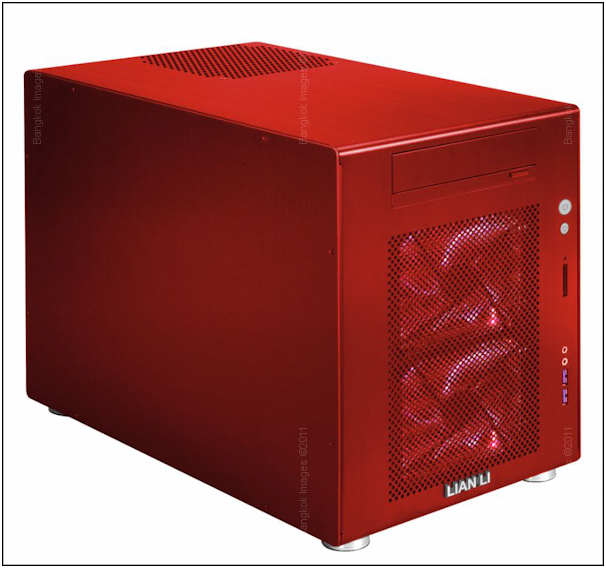
Overall I couldn’t be more pleased. I now have a screaming small and lightweight system for my workshop students to use, and to travel with on more extensive assignments. The complete system, monitor and keyboard/mouse included, packed in a hard case with wheels, weighs less than 22 pounds! Not bad at all.
The price vs. performance shows a keen value. Sure, I could have spent much more for a six core processor and the x2 version of the Revodrive, but this system is so fast and powerful as it is you’re sure to be happy. Knowing when ‘enough is enough’ is important. I’m not exactly known for knowing this point, but I really don’t see much need for the six core CPU, faster x2 Revodrive, more powerful 6970 GPU, or a full 24gb of RAM UNLESS you render a lot of video. If you do, the money would be well spent. For imaging, this system is a dream as is.
Everyone who has tried this system at first wonders if the system is running when they turn it on. They see the LED’s light up, but hear no noise unless they get real close. When they realize it’s running there’s a big smile. The smile gets much wider when the fast SSD brings them into Windows in 12-14 seconds. And the smile never goes away as they start processing images. This is the way it should always be.
Photography News of Interest *menu
Did you know that National Geographic selects the ten best amateur submissions every week. Check out these images and learn out to enter your own images.
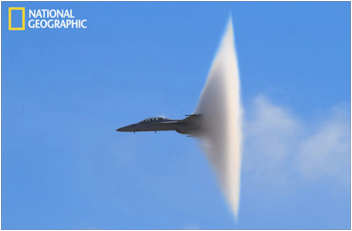
Are you interested in entering the London Street Photography Festival judging? There is also a student category.

SanDisk announces their new Extreme Pro SDHC cards which capacities up to 32gb. They feature read and write speeds up to 45mbps, UHS-I technology for the smoothest possible HD video recording.

I love this software for black and white conversions. NIK software announces it’s Silver EFEX Pro 2 upgrade. The first in several years. This is the software professionals most commonly use for their black and white conversions.

From our local paper the Nation, The Camera and The Courage. A show featuring two female photographers. Check out their work!

Thailand considers deporting two photojournalists who illegally crossed the Thai/Myanmar border. One photojournalist, John Sanlin is Burmese and faces severe reprisals if deported.
Phase one announced its newest line of high-end digital backs. The new IQ series features 80, 60, and 40mp resolutions. If you’re in the market for a $30,000 digital back check them out. Many consider them the best in the business.


Yahoo Finance lists 12 things that will be cheaper this year. On the list
is the DSLR estimated to drop to under $300 for entry level models for the first time.

A few weeks back I posted some images and information on the upcoming Fuji Finexpix X100 that stole the show at Photokina 2010 and CES 2011. This week Digital Photography Review must have
exercised their considerable clout to obtain a prototype copy to test. You'll want to read their preview here.
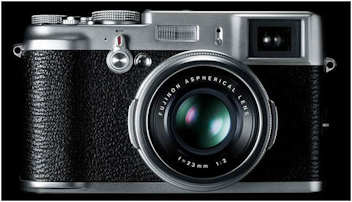
Readers Submissions *menu
Hi Steve
Here are some pics from a recent trip to Krabi.
Just read your weekly article on composition (also illustrated by boats) and would appreciate your critique on both composition and my attempts at photo shopping when you have a moment.
I am OK if you want to include this as a reader submission.
Peter







Hi Peter –
Your images are really improving. I'll comment on each image by image number.
1. This one doesn't work for me. If you would have sat on the ground or kneeled lower, then you could have used the exact same heading for an awesome composition in landscape mode rather than the portrait mode you used. The island in the background is great, the boats are great, but the use of portrait and the perspective hurts. Seems about a half stop underexposed.
2. Perfect balance, great shot. Underexposed by at least half a stop. Lots of great things we could do with this shot in post processing.
3. I think portrait mode works here because of the balance of the horizon to the two boats.. but the perspective is still off. It's like you're standing above. This same shot using a wide angle inches from the first boat would have been really powerful. Again, at least a half stop underexposed but holds much promise with post processing.
4. This had good potential but you didn't quite pull it off. Too much sky, and the bottom of the frame isn't coherent. Simply tilting the camera downwards would have worked wonders, or even kneeling and bringing it down to balance out the perspective and view. Love the skies on all these though. Again, a half stop underexposed.
5. This is a nice composition, but the bottom of the frame is again incoherent. The boat is cut off. It might not be possible to do much that.. but from what I can see if you'd set the camera down on the wood planks similar to how we used the tracks in Samut Songkram, you would have achieved a more powerful perspective without the issue of cutting off the boat on the bottom. The skies/clouds seem a bit blue and the color is a bit whacky.. have you profiled your monitor?
6. I think the horizon is fine, but to me it's just too underexposed to get a good feeling with it. I think it could be really interesting with directional light. We can explore there during our post processing section. If you have time before we meet, try to pick up 10-20 of your favorite images and we'll go through each one in detail and spend enough time with each so you'll know exactly how to replicate our work later.
7. I love the subject material, but this one would have really benefitted from your 12-24mm at about 18-20mm right up on top of the boats. It would have been spectacular!
These are way better than just a few months ago when we had our first workshop. You can tell a lot more thought and skill went into the compositions and actual capture settings. I’d expect as much improvement with a few months more practice.
Steve
Steve,
As you know, I was very happy with my Fuji F200EXR point and shoot. I’m attaching a few photos that I took with my new Canon T2i that I took at a small, and very poor, orphanage up in Mae Sot where I am right now. You know that I’m really a ‘point and shoot’ guy and that is all that I did on these photos….all automatic. Still I’ve taken less than 100 photos total with it, so it is really new to me.
I’m not expecting any critical acclaim from these (no ‘amateurish’ comments are necessary, that is all I claim to be), but I am so happy with the quality that this camera produces I thought I’d share a few of the results. I’m ecstatic with the focus, color and vibrancy of these photos that were just taken ‘a natural’.
You recommended, I listened, I’m thrilled with the result. Part of the reason for buying this was the improved photo quality, but I also want to attempt to make some short videos at the orphanages. You said I wouldn’t regret the expense and you are right.
Thanks as always for your help.
Best regards,
Gary

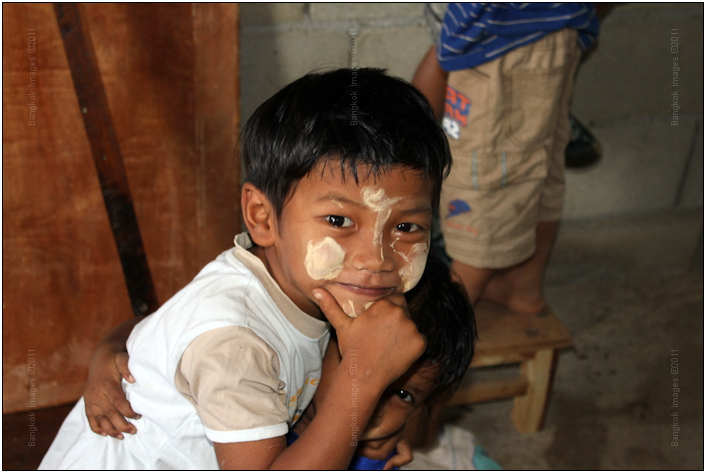
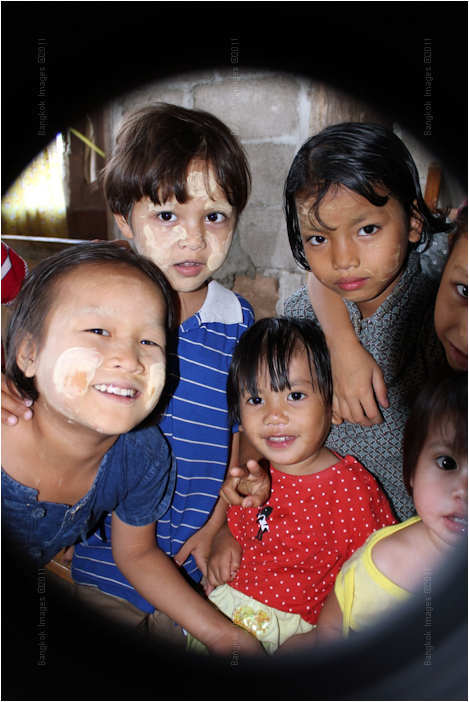
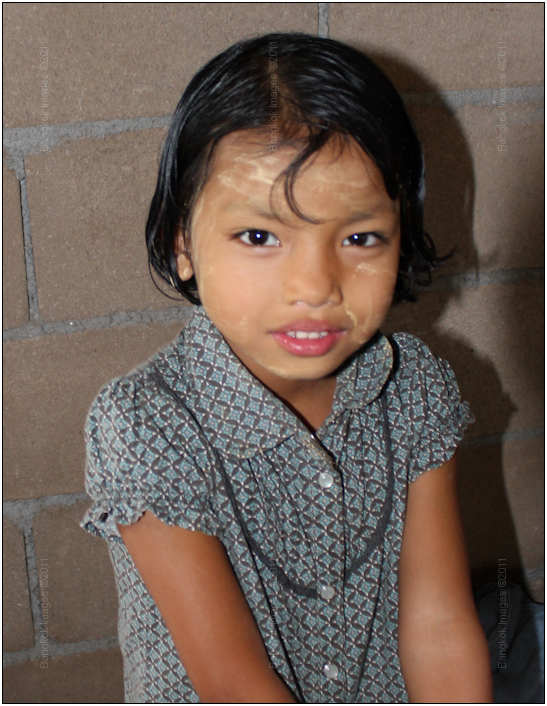
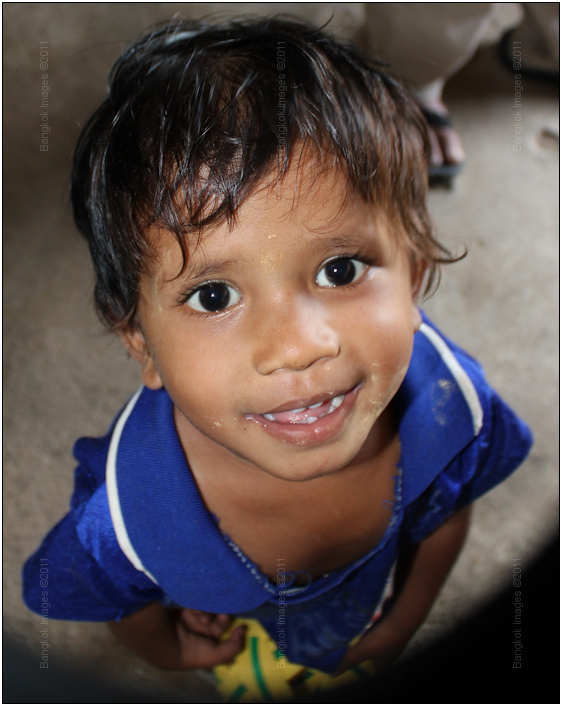
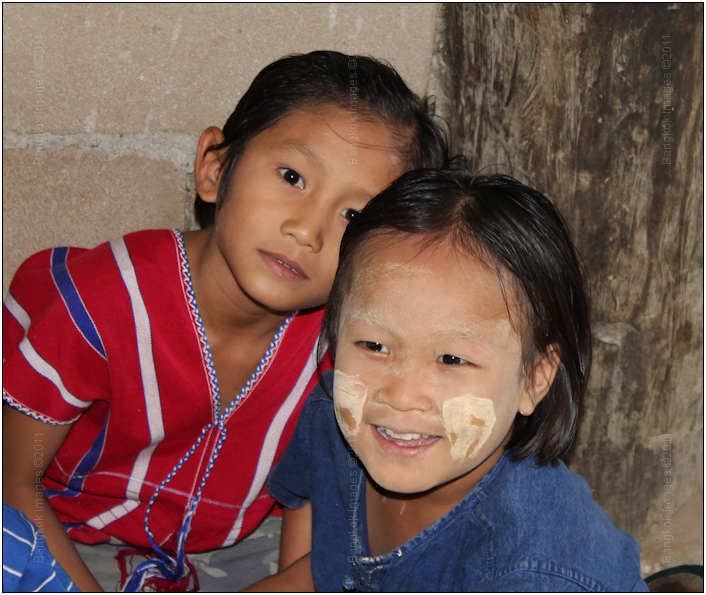
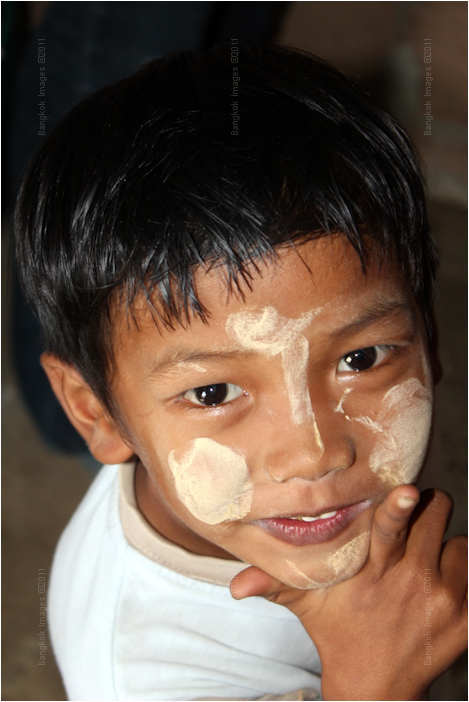
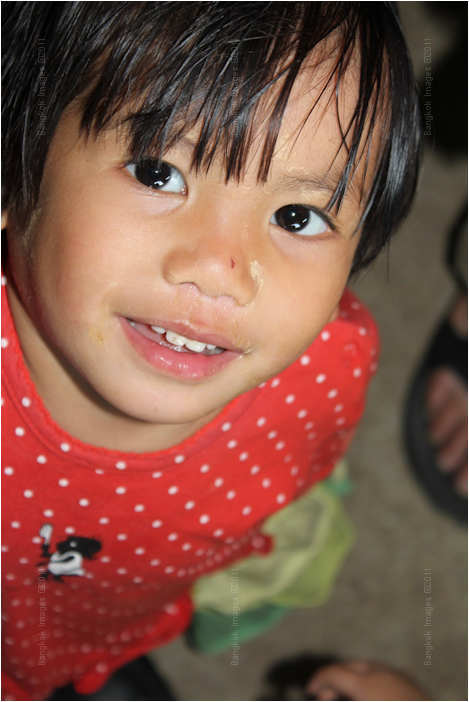
Hi Gary –
Nice pics! I’m glad you’re enjoying the new camera.
The primary skill of any photographer is being there, seeing the shot, and helping the subjects feel comfortable.. all of which you covered. Nice.
Do you mind if I run these in the column in the next few weeks? I’d like to mention to the readers that you’re still doing great work along the border refugee camps, orphanages, and anywhere underprivileged children need help. Maybe someone reading this with the resources of time or money to contribute will ask to be put in contact with you. I’d like nothing better.
Have fun there.
Steve
I’d like to mention that everyone, myself included, is really enjoying the current trend of readers submissions. Everyone loves them, but remember we can really use more. I have only another week’s worth in my queue, so please take the time to put together a few images and words if you can and send them in. Thank you. info@BangkokImages.com
Readers Questions *menu
This week’s question is pulled from the forums because it’s a popular question and a lot of fun. We covered it here in a tutorial titled Selected Saturation and I’m sure you’ll see it again. I also missed a very important part of Rod’s question and recently realizing it, I decided to run the entire question with my updated response here.
Rod C asks:
Looking on some different forums there seems to be multiple ways of making part of the picture B&W. I know to some this is a “kitch” look that has been done to death. But I think at times it can have a real impact.
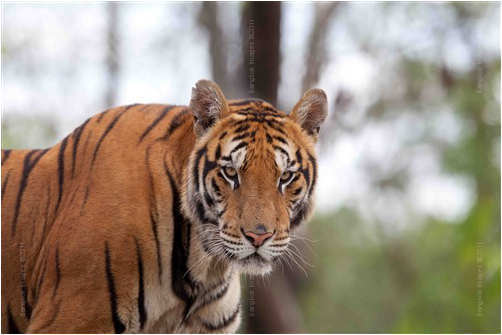
Using Lightroom 3 I highlighted the area I wanted B&W with the adjustment brush then reduced the selected areas saturation to zero.
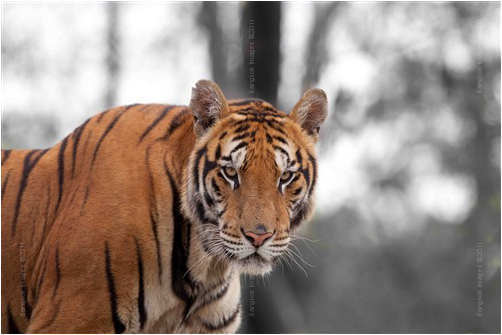
One thing I don’t know how to do is use the Lightroom presets to adjust only part of the photo. For Example I’d like to adjust only part of this picture to a sepia tone, leaving the rest colour.
Hi Rod.
You're correct.. it’s been done to death, but properly employed such as you've done here it can be very effective. Usually this works best with a strongly colored red/green/blue subject that sits off by itself. Like your tiger. Monks in Orange robes, a red sports car against b&W city streets..
I have a friend with a half Chinese daughter. He sent me a picture of her dangling a live cockroach in front of her face looking intently at the bug wiggling around. He felt it was a good picture but didn't have any 'pop', so I recommended he desaturate all but the cockroach.. WOW, it totally changed the character of the picture!

Rod – I just realized I didn't answer part of your question. I'm really sorry. I'll do it now.
"One thing I don’t know how to do is use the Lightroom presets to adjust only part of the photo. For Example I’d like to adjust only part of this picture to a sepia tone, leaving the rest colour. "
The Lightroom presets are not yet available in the localized editing mode. This means you also can't set the entire image to a preset, and then go back and selectively erase part of it back to color. Please see the tutorial "Selective Saturation" to see how to use CS5 Photoshop to accomplish what you ask in this manner, and it would be the best way to do this.
However, you can use the localized editing sliders for exposure, saturation, contrast, etc, to create your own 'mix' of black and white or sepia, and then paint the area you don't wish to be in color. You can even save these settings to a localized editing preset to use again later. Hopefully Lightroom being a relatively new product will evolve more and more with each new version as Photoshop itself has done.
Steve
Please submit your questions to info@BangkokImages.com All questions will be answered and most will show up in the weekly column.
A Snapshot of Bangkok Images Week in Review *menu

This week we had one workshop and two small assignments so not much done at all. I continue to enjoy the great winter weather by getting out as much as I can to enjoy Bangkok and the surrounding areas.
The User Gallery of the week is Poompui’s new gallery showing his pictures from a boat trip on his brother in-laws boat. Poompui was generous enough to offer for me to go along, and I certainly would have loved to go, but I was out of town that weekend. A great disappointment. Take a look at his gallery! Only two images, but a heck of a nice boat!
Positive comments continue to pour in about our new look and much faster more interactive site. If you haven’t already checked it out, visit www.bangkokimages.com to see mylatest galleries , share your own galleries, participate inthe forums, and scour our large repository of photography related articles. The “What’s New” page continues to be very popular with almost daily updates and interesting content.
A treat for this week is a new Dana authored "Thailand Photo Stories" titled "Camera Auctions." Dana's stories are among the top rated pieces on the site, some with over 1000 reads. You'll want to check this one out, it's a good one.
Infocus Blog, THIS Is Thailand *menu

Canon 5d Mark II, 24-70mm F2.8L USM @F8 1/500th 24mm ISO 100
Sometimes we get so caught up in the more profound negative aspects of Thailand we lose sight of what brought us here in the first place. I’m guilty of this as much as the next guy, but we all Cycle Thailand
and perhaps lately I’ve been on the down stroke more than I’d care to be.
Despite all the common complaints about Thailand why are we still here? I’d feel seriously sad for the individual who comes here primarily to improve their love life, so there must be more. I’m here for a number of things:
First, I really enjoy Bangkok. It’s nothing you can put your finger on, but like Seoul, Tokyo, Hong Kong, and Taipei, Bangkok has serious energy. You feel alive almost every minute you’re outside your apartment. When I was a patrol cop in
San Diego people asked me why I did it. The answer was easy: “I live more on one night on patrol, than I’d otherwise live in an entire year as a civilian.” This couldn’t be more true for living in Bangkok.
I live more on any single day out on the town, than I could live in all but 2 or 3 major US cities. And none of them would be as high energy and exciting, while providing all the exotic stimuli of smells, sights, and sounds. Bangkok Rocks with
high energy.

Canon 1ds Mark II, 24-70mm F2.8L USM @F5.6 1/25th 32mm ISO 100
A good friend lives in Hua Hin in a really nice villa complete with a new house, pool, maid, gardeners, and for less money than it costs me to live in Bangkok. Occasionally I go down to visit or enjoy one of his fun dinners or parties. Unless the Jazz
Festival is happening at the time, I can’t stand to spend more than a day there. There just isn’t enough to keep me interested. I’ve tried on several occasions, but by day 2 I’m climbing the walls. Hua Hin is Thailand,
but it’s far too westernized for my tastes.

Canon 1ds Mark II, 70-200mm F2.8L IS USM @F8 1/125th 70mm ISO 100
In contrast I love exploring the Thai countryside. If Bangkok is like a shot of high energy right in the arm, the Thai countryside is like a controlled pain pump. You can relax, see the sights, eat good food, see new people/places/things, but if you get
bored you can press that button and get a rush of energy only Thailand can provide whether it be investigating a strange towns nightlife or their local attractions. Once while traveling with Stick up near Korat we went out on the town at night
and while we were relatively unimpressed, it was a fun experience. In Phrae with another friend we discovered a type of nightlife thought extinct for a million years.. so you never know.

Canon 1ds Mark II, Sigma 12-24mm F4 @F11 1/30th 13mm ISO 100
C
There’s little to rival a week in the southern three provinces, except maybe a tour of duty in Iraq of Afghanistan. What an exciting time I had there! Thai culture, but with an Islamic twist, a warzone flavor, and so many new stories to uncover.
I’ve never been treated so well, but in so much danger at the same time. And you only need to drive 1200 kilometers to get there.

Canon 1ds Mark II, 70-200mm F2.8L IS USM @F2.8 1/2500th 195mm ISO 200
Sometimes I miss the great northwest of Oregon, Washington State, and Canada. (those Canadians are so damn polite!) When I do, I head north to Mae Sot or even further north to Mae Hong Son and enjoy breathtaking mountain vistas, great
international food of all types, and a cool temperature you can only dream about while in Bangkok.

Canon 5d Mark II, 24-70mm F2.8L USM @F8 1/500th 24mm ISO 100
Other times I miss the gulf coast with the shrimp boats, clear blue waters, and white sand beaches. It’s a working man’s coast from crab and shrimp fishermen to oil workers. On these occasions I head down to Samut Songkran or in the other
direction towards Ban Chang. Have you ever been to Ban Chang? A well kept secret for sure.

Canon 1ds Mark II, Sigma 12-24mm F4 @F5.6 1/125th 24mm ISO 100
The Midwest in the USA has an totally uninspiring landscape, yet the thousands of square miles of farmland and the people who work the land have a distinct “down-home” feel you can’t find anywhere else. Well, unless
you head into the Isaan countryside which is the Thai version of the Midwest. Friendly Thai farmers, rolling fields of rice vs. rolling fields of wheat, tall rows of cane vs. tall rows of corn, and a lifestyle you must experience to understand.

Canon 5d Mark II, 300mm F2.8L IS USM @F4 1/8000th ISO 200
I grew up on the beaches of Southern California, so imagine my delight when discovering Ko Chang, Ko Samet, the off-side of Phuket, Krabi, and the other relatively unspoiled Thai beaches. I was a NAUI dive master by 18 and dove everything along the west
coast from Baja to Catalina to the Channel Islands more times than I can count. When I get the urge there’s an Aussie dive master who takes me out for a similar experience and an entirely different ecosystem to explore.

Canon G9 F3.2 1/200th ISO 200
Most of all though it’s the people who keep me here. The friends I’ve made both local and expatriate, the clients I’ve served, and even those in need who appreciate the little I can do for them. Sure, Bangkok and other such populated
places are full of the corrupt and annoying, but most Thai people are warm hearted and generous. It’s too easy to lose sight of this when the bad apples keep trying to get their hands in your pockets.

Canon 1ds Mark II, 24-70mm F2.8L USM @F8 1/200th 45mm ISO 200
As much as we complain, and I’m as guilty of it as the next guy, ultimately we’re all here because the good (as we individually rate it) outweighs the bad. We’re here because we want to be despite all the negatives
you could fit in a shoebox. We’re here, because THIS Is Thailand.
Until Next time..




